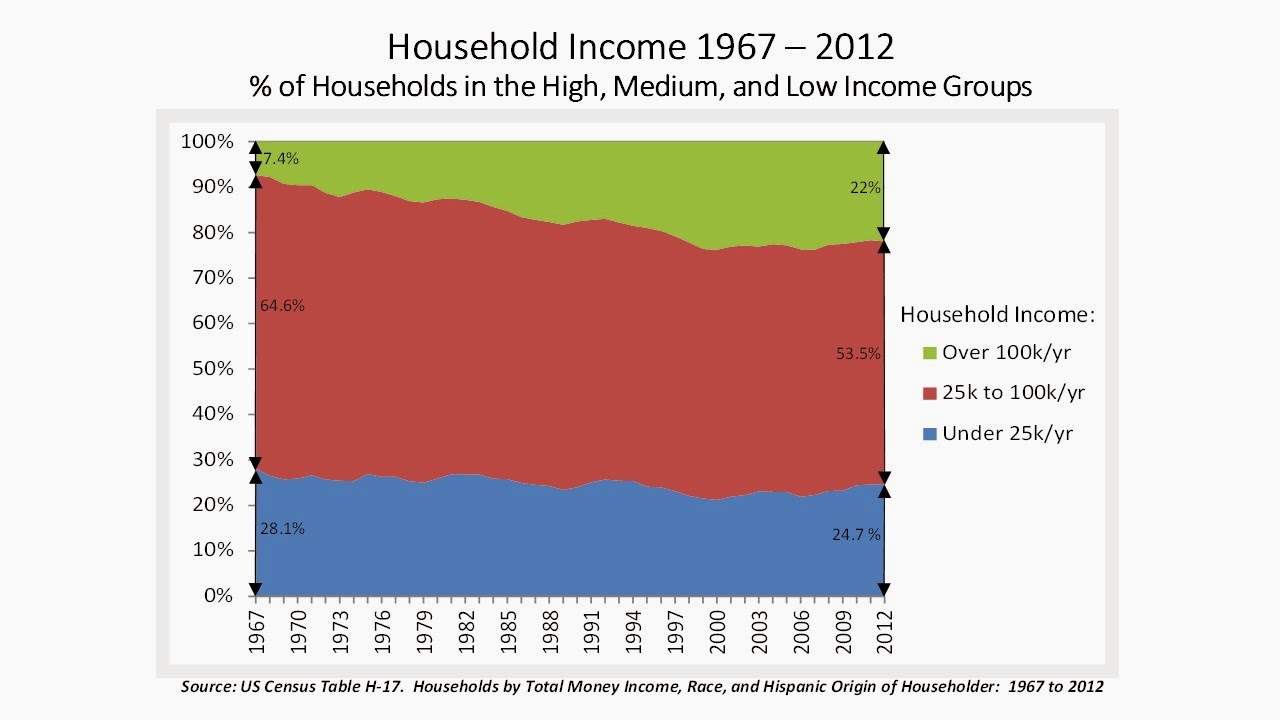The data for the graph below is taken from the US Census
who’s been tracking household income data going back to 1967. They’ve
adjusted everything to current day dollars to allow for meaningful year-to-year
comparisons.
The data show a very clear trend. The percentage of
households in the lower and middle income groups (blue and red area) have decreased from
1967 to 2012 while the percentage of households in the upper income group (green area) has
grown by a factor of 3x! (7.4% of households in 1967 were high income vs. 22% of households in 2012.) Many lower and middle income households have become higher income households. The popular narrative says the
middle class has been in steady decline for years, and that Washington must do
something to help.
Washington, don’t just do something, stand there.

The government is spending over 20% of GDP, and collecting in taxes only 17% of GDP. Regardless of what "narrative" is employed, taxes must go up and government spending must come down. The fight is still about who's taxes go up, and which beneficiaries get their spending cut?
ReplyDeleteIs that chart adjusted for inflation? If not then you should probably delete this blog post to save yourself the embarrassment.
ReplyDeleteSorry I see it was in fact adjusted for inflation; ignore my previous comment's rudeness. To be honest, even as a center-left person, I've suspected as much before. Kudos to you for finding the data to back it up. However, in my opinion, inequality is still a problem, as other countries have found ways to deal with things like infant death rates, better than us. We also have significantly lower economic mobility than much of the developed world, which may not be the worst thing in the world, but it is something that at least we should be honest about.
ReplyDeleteFurthermore, despite the positive trend of more upper/upper middle class households, that doesn't change the fact that most people would prefer that wealth to be more evenly spread out, i.e. less poor people, and slightly more rich people, rather than just more rich people. It's better than stagnation, or a "shrinking middle class", but it isn't exactly how most people would want the economy to work.
ReplyDeleteWealth inequality in the U.S. has a strong demographic component to it. The studies I've seen suggest Americans move to the higher net worth groups as they get older. Makes sense. As people get older, they've had a longer earnings run to accumulate savings, enjoy the compound effect, and pay off their homes.
ReplyDelete